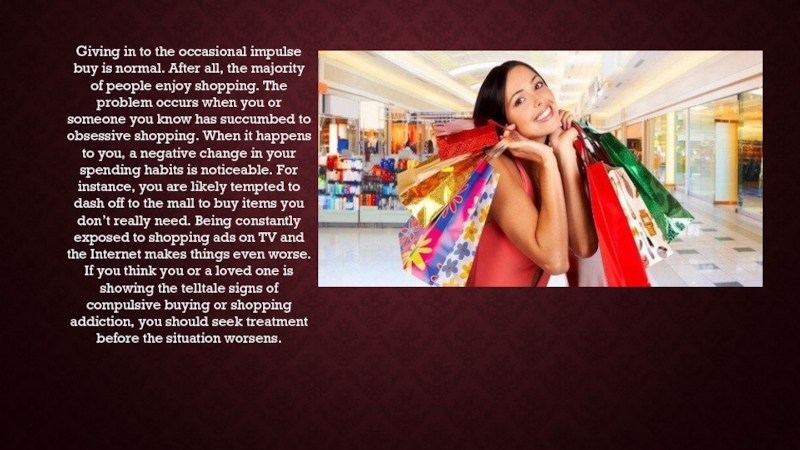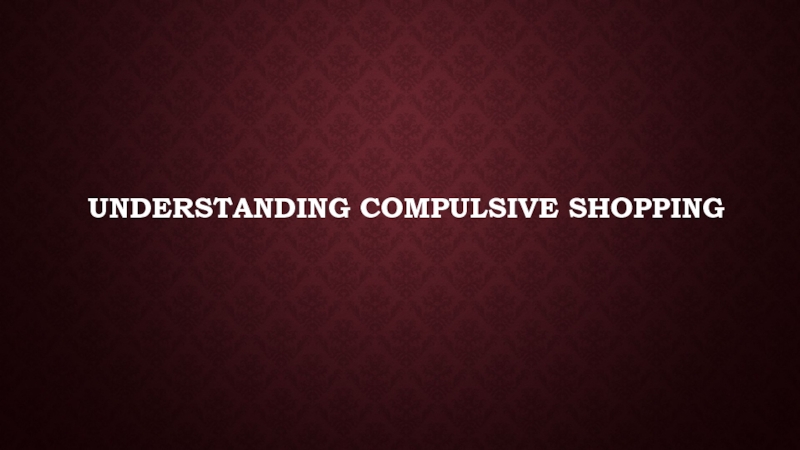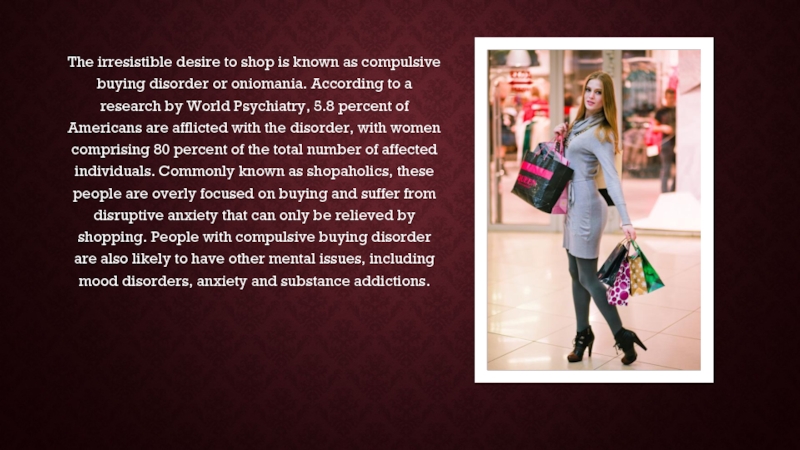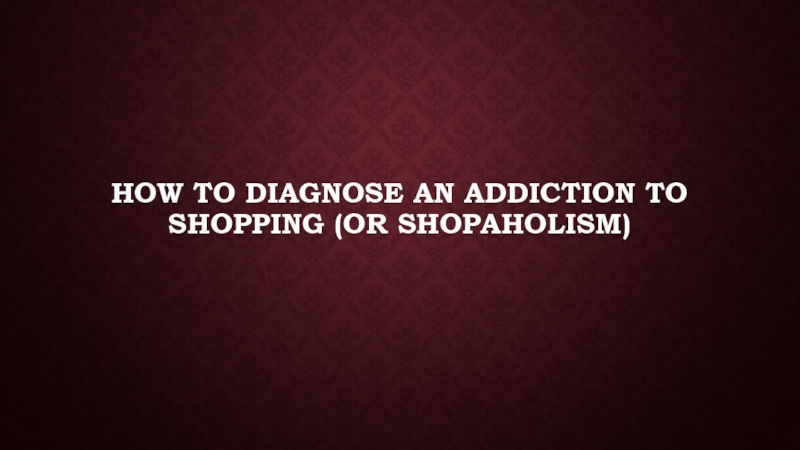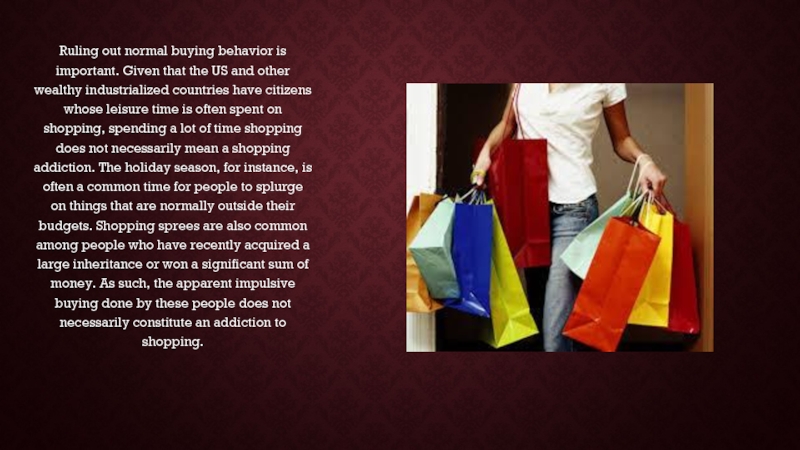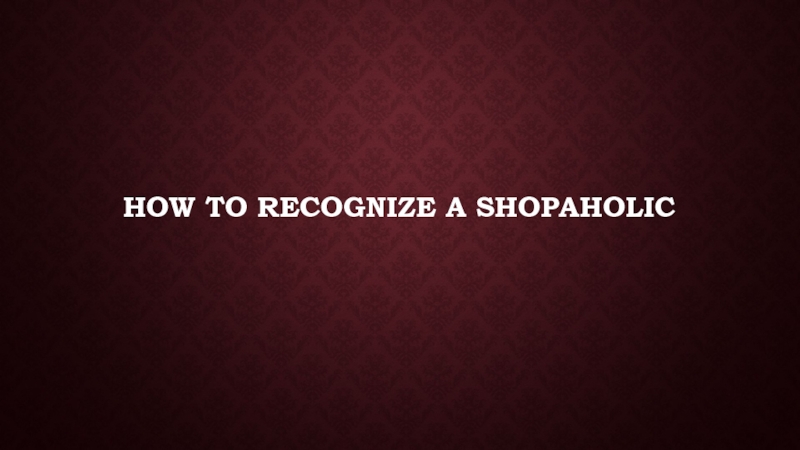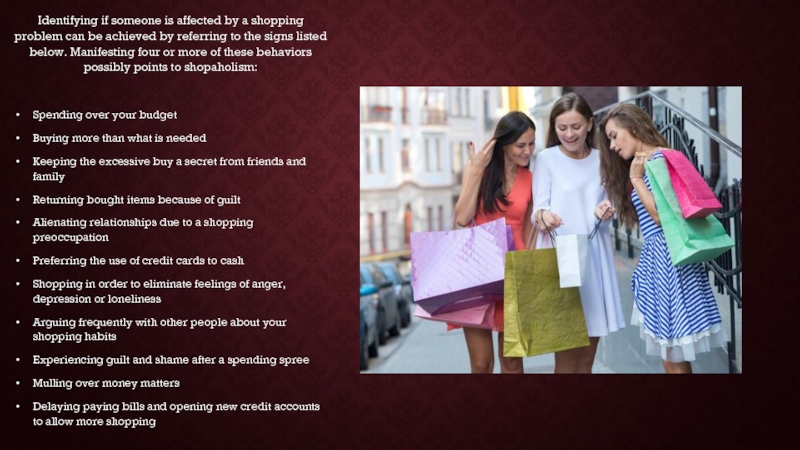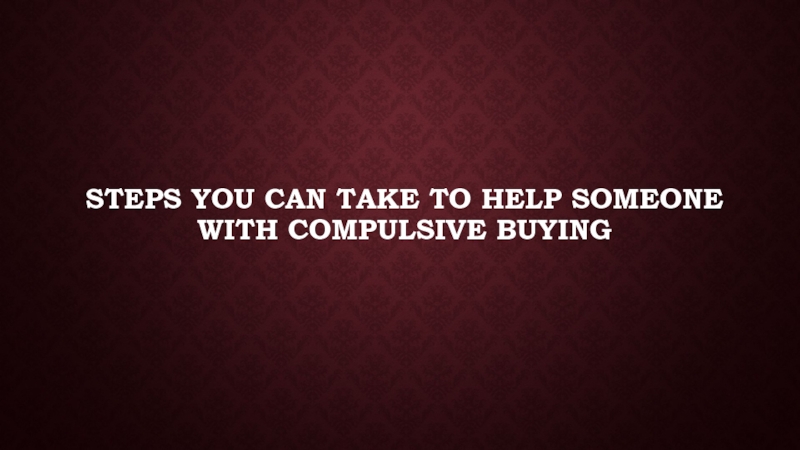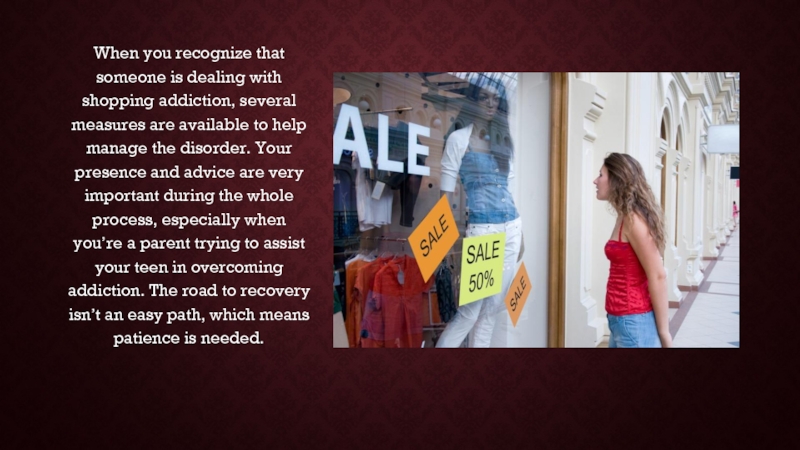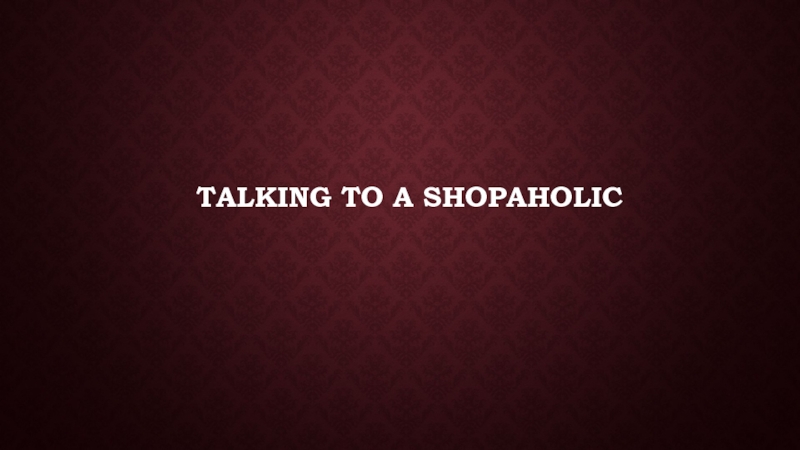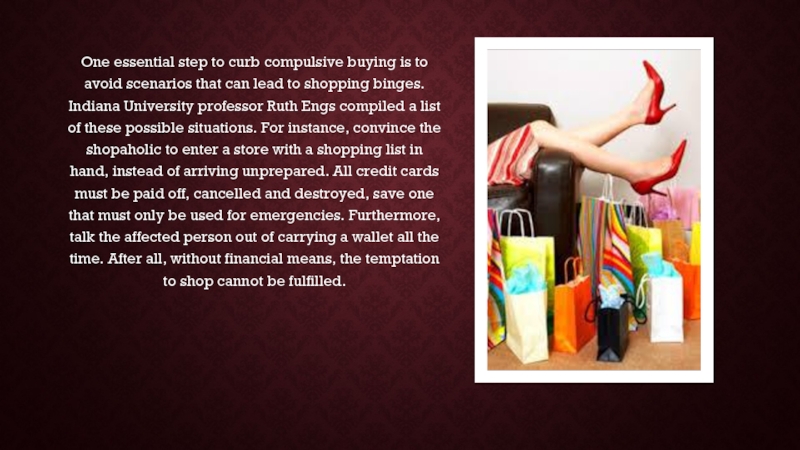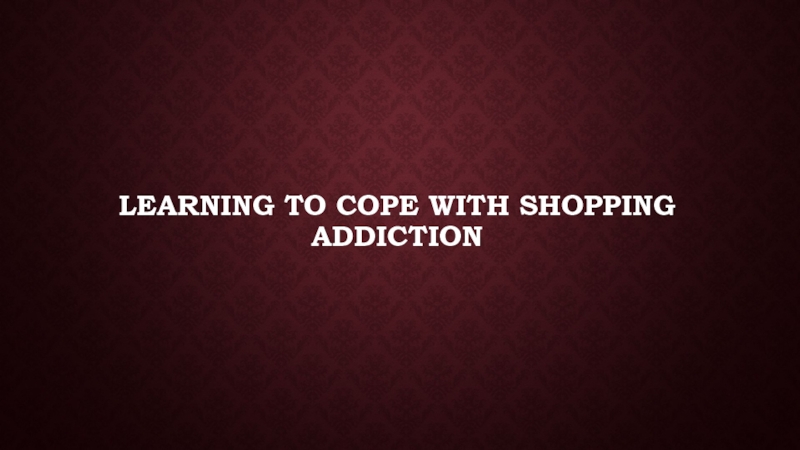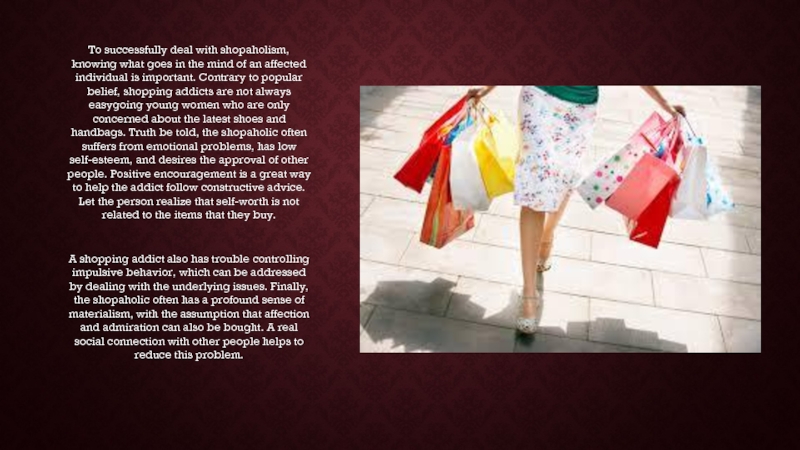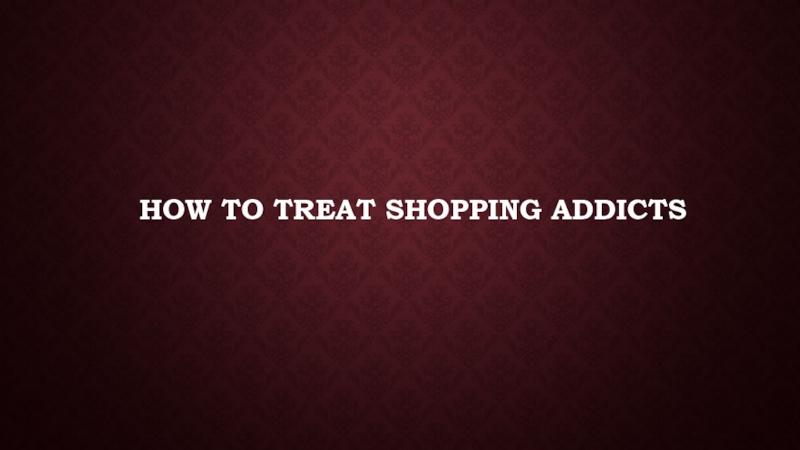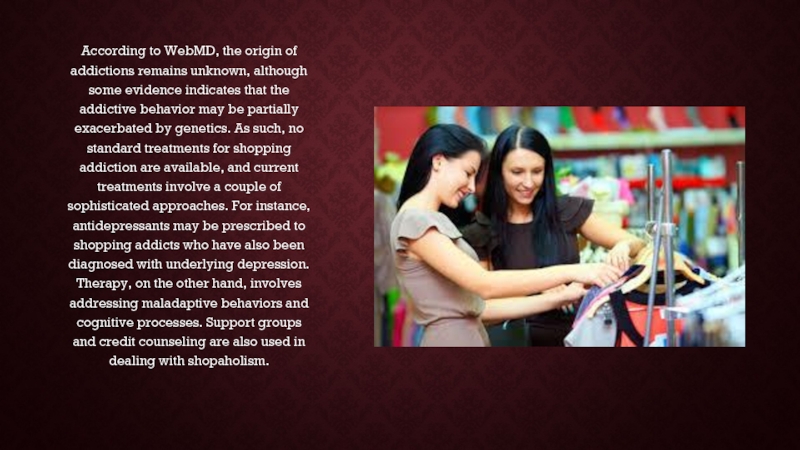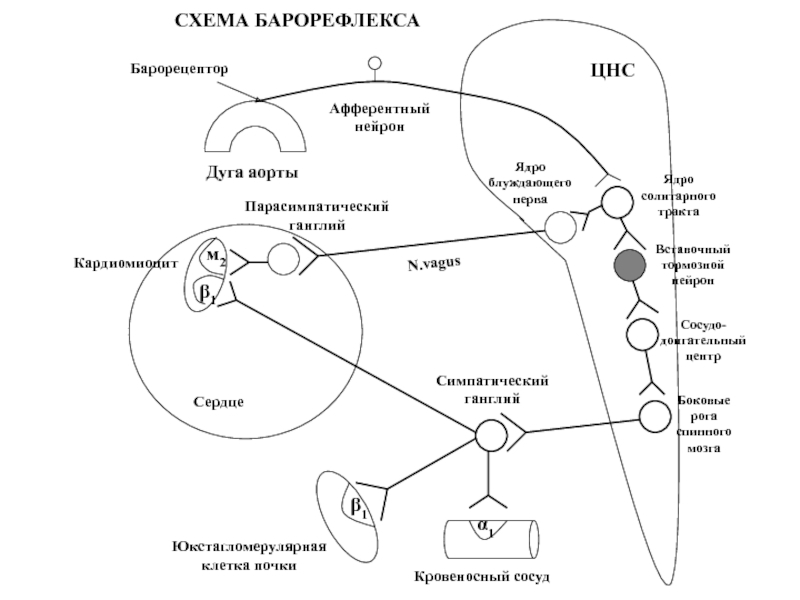Разделы презентаций
- Разное
- Английский язык
- Астрономия
- Алгебра
- Биология
- География
- Геометрия
- Детские презентации
- Информатика
- История
- Литература
- Математика
- Медицина
- Менеджмент
- Музыка
- МХК
- Немецкий язык
- ОБЖ
- Обществознание
- Окружающий мир
- Педагогика
- Русский язык
- Технология
- Физика
- Философия
- Химия
- Шаблоны, картинки для презентаций
- Экология
- Экономика
- Юриспруденция
How to Help a Shopaholic?
Содержание
- 1. How to Help a Shopaholic?
- 2. Giving in to the occasional impulse buy
- 3. Understanding Compulsive Shopping
- 4. The irresistible desire to shop is known
- 5. How to Diagnose an Addiction to Shopping (or Shopaholism)
- 6. Ruling out normal buying behavior is important.
- 7. How to Recognize a Shopaholic
- 8. Identifying if someone is affected by a
- 9. Steps You Can Take to Help Someone With Compulsive Buying
- 10. When you recognize that someone is dealing
- 11. Talking to a Shopaholic
- 12. One essential step to curb compulsive buying
- 13. Learning to Cope With Shopping Addiction
- 14. To successfully deal with shopaholism, knowing what
- 15. How to Treat Shopping Addicts
- 16. According to WebMD, the origin of addictions
- 17. Скачать презентанцию
Giving in to the occasional impulse buy is normal. After all, the majority of people enjoy shopping. The problem occurs when you or someone you know has succumbed to obsessive shopping.
Слайды и текст этой презентации
Слайд 4The irresistible desire to shop is known as compulsive buying
disorder or oniomania. According to a research by World Psychiatry,
5.8 percent of Americans are afflicted with the disorder, with women comprising 80 percent of the total number of affected individuals. Commonly known as shopaholics, these people are overly focused on buying and suffer from disruptive anxiety that can only be relieved by shopping. People with compulsive buying disorder are also likely to have other mental issues, including mood disorders, anxiety and substance addictions.Слайд 6Ruling out normal buying behavior is important. Given that the
US and other wealthy industrialized countries have citizens whose leisure
time is often spent on shopping, spending a lot of time shopping does not necessarily mean a shopping addiction. The holiday season, for instance, is often a common time for people to splurge on things that are normally outside their budgets. Shopping sprees are also common among people who have recently acquired a large inheritance or won a significant sum of money. As such, the apparent impulsive buying done by these people does not necessarily constitute an addiction to shopping.Слайд 8Identifying if someone is affected by a shopping problem can
be achieved by referring to the signs listed below. Manifesting
four or more of these behaviors possibly points to shopaholism:Spending over your budget
Buying more than what is needed
Keeping the excessive buy a secret from friends and family
Returning bought items because of guilt
Alienating relationships due to a shopping preoccupation
Preferring the use of credit cards to cash
Shopping in order to eliminate feelings of anger, depression or loneliness
Arguing frequently with other people about your shopping habits
Experiencing guilt and shame after a spending spree
Mulling over money matters
Delaying paying bills and opening new credit accounts to allow more shopping
Слайд 10When you recognize that someone is dealing with shopping addiction,
several measures are available to help manage the disorder. Your
presence and advice are very important during the whole process, especially when you’re a parent trying to assist your teen in overcoming addiction. The road to recovery isn’t an easy path, which means patience is needed.Слайд 12One essential step to curb compulsive buying is to avoid
scenarios that can lead to shopping binges. Indiana University professor
Ruth Engs compiled a list of these possible situations. For instance, convince the shopaholic to enter a store with a shopping list in hand, instead of arriving unprepared. All credit cards must be paid off, cancelled and destroyed, save one that must only be used for emergencies. Furthermore, talk the affected person out of carrying a wallet all the time. After all, without financial means, the temptation to shop cannot be fulfilled.Слайд 14To successfully deal with shopaholism, knowing what goes in the
mind of an affected individual is important. Contrary to popular
belief, shopping addicts are not always easygoing young women who are only concerned about the latest shoes and handbags. Truth be told, the shopaholic often suffers from emotional problems, has low self-esteem, and desires the approval of other people. Positive encouragement is a great way to help the addict follow constructive advice. Let the person realize that self-worth is not related to the items that they buy.A shopping addict also has trouble controlling impulsive behavior, which can be addressed by dealing with the underlying issues. Finally, the shopaholic often has a profound sense of materialism, with the assumption that affection and admiration can also be bought. A real social connection with other people helps to reduce this problem.

